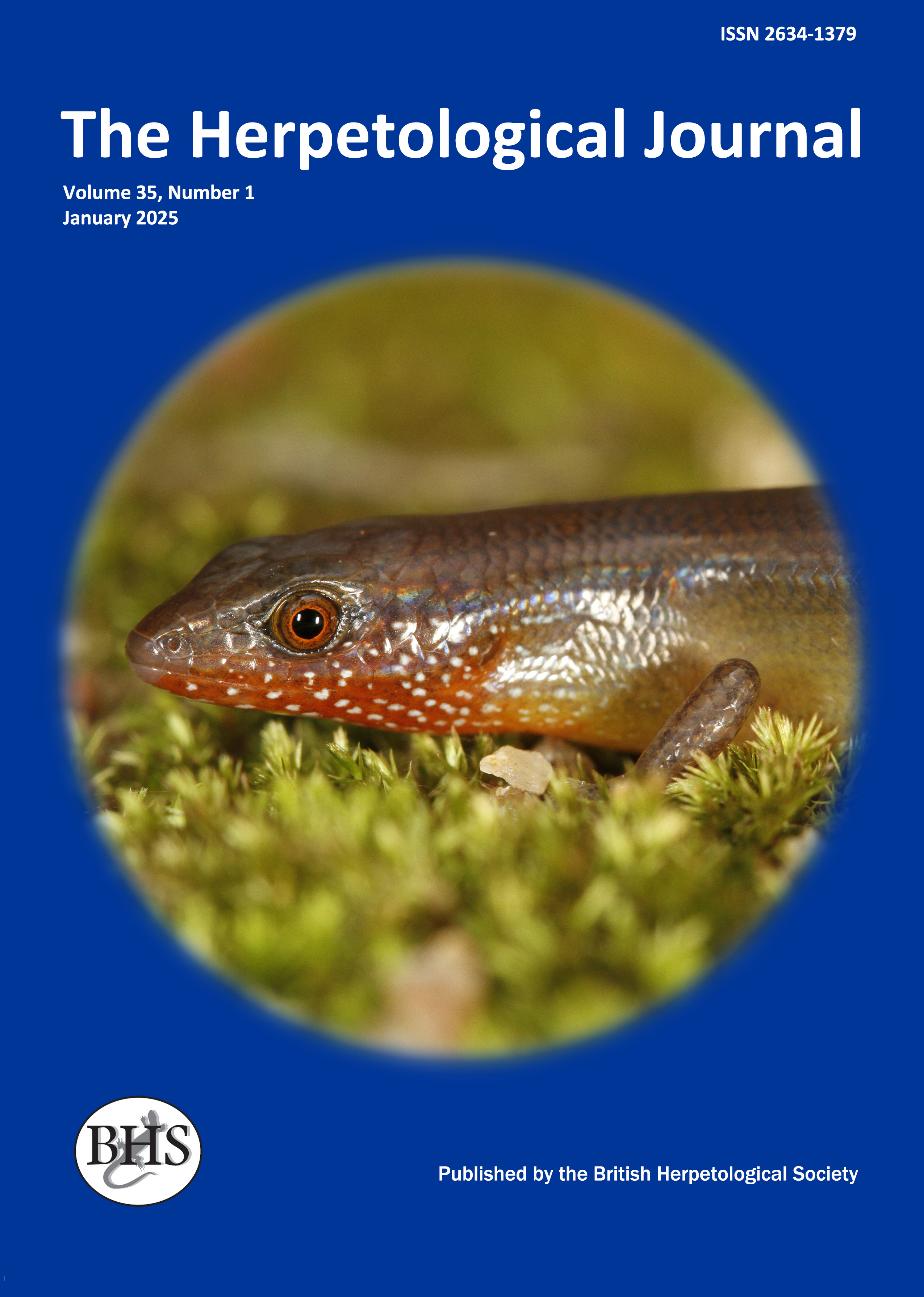
The Herpetological Journal
The Herpetological Journal is the Society's prestigious quarterly scientific journal. Articles are listed in Biological Abstracts, Current Awareness in Biological Sciences,Current Contents, Science Citation Index, and Zoological Record.
ISSN 0268-0130
2021 Impact Factor from Clarivate for the Herpetological Journal is 1.194, an increase of 0.332 from 2020.
pdf 03. Clutches, tadpoles and advertisement calls of Synapturanus mirandaribeiroi and S. cf. salseri in Central Amazonia, Brazil
1598 downloads
Open Access
pp. 86-91
Authors: Menin, M.; Rodrigues, D.J. & Lima, A.P.
Abstract: Species of the genus Synapturanus are small, burrowing frogs that inhabit the leaf litter of the rainforest floor. This genus is distributed in the northern region of South America and contains three species: Synapturanus mirandaribeiroi, S. salseri and S. rabus. In this study we describe the clutch, tadpole and advertisement call of two sympatric species (S. cf. salseri and S. mirandaribeiroi) that occur in Central Amazonia, Brazil. Both lay terrestrial eggs and their tadpoles hatch at a late developmental stage (approximately stage 42). Clutches and tadpoles of the two species are similar in size and appearance. The shape and coloration of newly metamorphosed individuals are similar to those of adults. The advertisement call of S. cf. salseri is a long, single, clearly pulsed, relatively pure tone between 900 and 1290 Hz, while that of S. mirandaribeiroi is a single, brief, nearly pure tone between 1094 and 1710 Hz. Advertisement calls of Synapturanus spp. are similar to those of Myersiella microps, and may be homologues. Both genera inhabit the forest floor, although their distributions are allopatric. Similarities in habitat and reproductive mode among Synapturanus spp. and Myersiella microps further corroborate the hypothesis of a close phylogenetic relationship between these genera.
Keywords: PHYLOGENY, MICROHYLIDAE, VOCALIZATIONS, LARVAE, ANURA, EGGS

